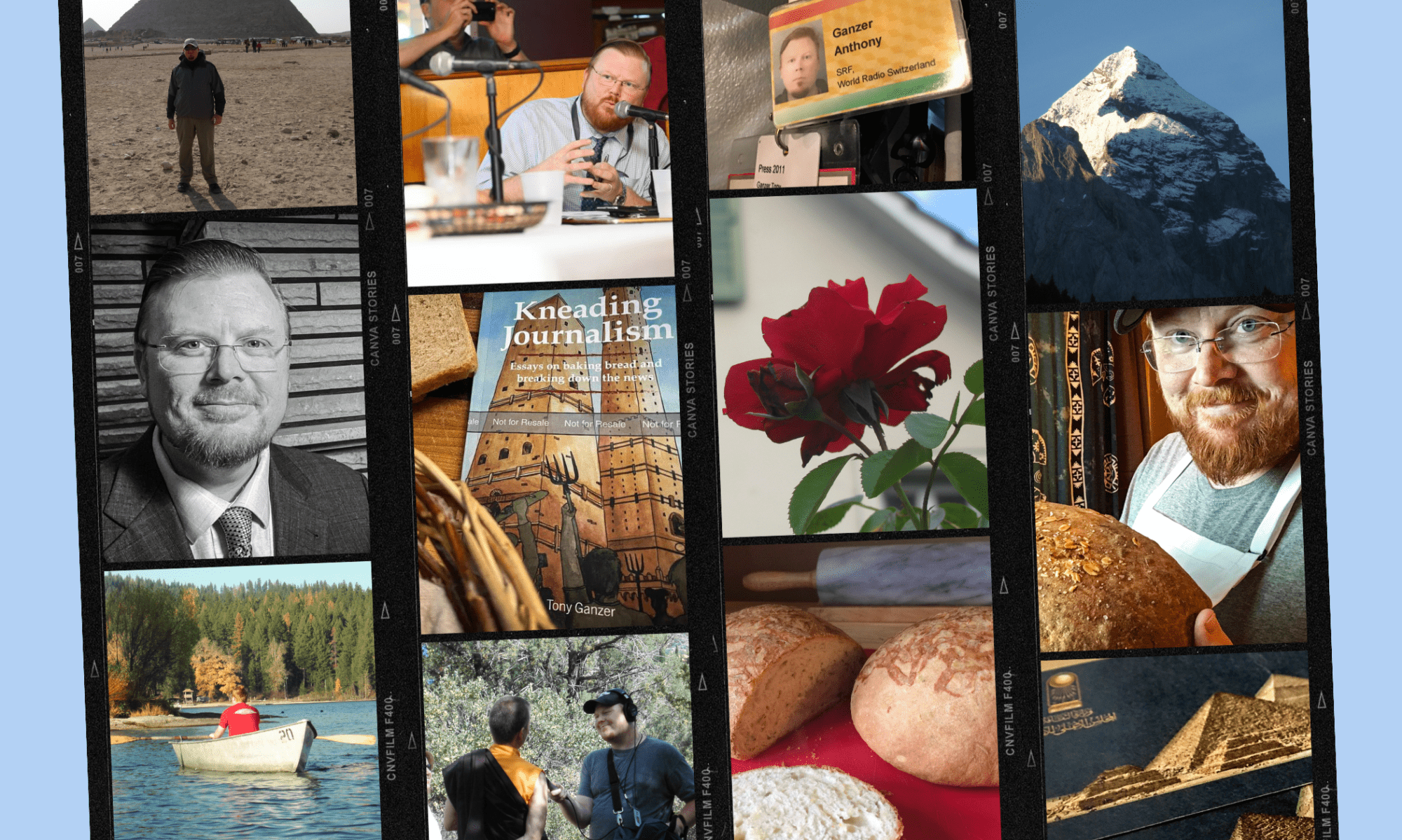Incredibly thankful to Current: News for Public Media and its digital editor Mike Janssen for publishing an adapted excerpt and recipe from Kneading Journalism. As some of my readers will know, Current is the main trade publication for US public media news…and now sometimes bread recipes.
Mike suggested adapting my essay on my reporting trip to Egypt to introduce the book to readers, and I gladly accepted. Some of these anecdotes I’ve told friends and colleagues over the years, and being able to put them in the book (and now Current) is a treat.
Out of the tightly layered rows of dusty buildings from Cairo’s core, the Great Pyramid of Giza springs from the desert like the wonder it is. Driving southwest of my hotel near Tahrir Square — the site of the 2011 demonstrations and heart of the revolution — Hamed and I found ourselves at the gates of the Sphinx and pyramids that hold mythic significance for Egypt, the world, and for Hamed personally.
This trip in February 2012 took place during a still turbulent period after the ouster of long-time strongman Hosni Mubarak. Hamed worked as an intervention specialist in Zurich: kind of a mix between a social worker and goodwill ambassador for social services. I met him while reporting a story on homelessness in Zurich for Swiss public radio and managed to earn his trust to learn more of his personal story. (“You have honest eyes,” Hamed told me.) Over an evening of open conversation and a careful ride-along with Hamed and his colleague, I ultimately earned an invite to join him on a visit to a still evolving post-revolutionary reality of his hometown. I would create a series of reports acting as a profile of Hamed, while also providing a snapshot of Egypt’s tenuous political situation.
Part of an excerpt of Kneading Journalism for Current.org
Check out Current for the full adaptation, and consider watching one of my older baking videos if you want to hear the stories as I bake Egyptian Fino Bread!
As I noted in a post about “the hustle” seen in Cairo, the city was an amazing place, and I was fortunate to briefly visit and report from there. It was a very foreign environment for me, but most of my interactions were greatly positive.
“As surreal, and as special as that adventure was, I still draw from those memories in my current life in Cleveland, and will likely do so for the rest of my days,” I wrote. “Sometimes I wish I didn’t see so many connections between Cairo-in-flux and an American city. But I hope reflecting on, and savoring, my past experiences help make for a more enriched present and future.”







